(kyrill or cyril) alexandria (Mehr als 7.300 Ergebnisse)
Produktart
- Alle Produktarten
- Bücher (7.220)
- Magazine & Zeitschriften (3)
- Comics (3)
- Noten
- Kunst, Grafik & Poster (67)
- Fotografien (5)
- Karten
-
Manuskripte &
Papierantiquitäten (8)
Zustand
Einband
Weitere Eigenschaften
Gratisversand
Land des Verkäufers
Verkäuferbewertung
-
Arithmeticorum Libri Sex, et De Numeris multangulis Liber Unus
Anbieter: Jonathan A. Hill, Bookseller Inc., New York, NY, USA
Erstausgabe
Cum Commentariis C.G. Bacheti?& observationibus D.P. de Fermat?Accessit Doctrinae Analyticae inventum novum, collectum ex variis eiusdem D. de Fermat Epistolis. Large engraved vignette on title, several finely engraved headpieces & initials, & a few woodcut diagrams in the text. 6 p.l., 64, 341, 48 pp., one leaf of errata. Folio, cont. speckled calf (carefully rebacked with the orig. spine laid-down, light browning as usual, two corners discretely repaired), spine richly gilt. Toulouse: B. Bosc, 1670. First edition, and a very fine and fresh copy. This edition is the first to contain Fermat's observations on the Arithmetica of Diophantus, the first systematic treatise on algebra; it also contains (on H3r) the first statement of the celebrated "Last Theorem" which Fermat originally wrote by hand in the margins of his copy of Bachet's edition of Diophantus (1620). This theorem is the most famous problem in mathematics and remained unsolved for over 325 years until its recent solution by Andrew Wiles. But it should be remembered that Wiles was able to resort to sophisticated 20th-century techniques not available to Fermat. The exact form of Fermat's proof, if indeed he had a genuine one, thus remains one of the great unsolved puzzles of mathematics. The 1670 edition was published posthumously by Fermat's son Clement Samuel. It is based on his father's annotated copy of the Bachet edition of 1621 and contains a major part of Fermat's work on number theory, a branch of mathematics that he virtually created. A nice copy with the extremely rare errata leaf. ? Smith, Rara Arithmetica, p. 348.
-
Mathematicae Collectiones a Federico Commandino Urbinate in latinum conversae, et commentariis illustratae
Verlag: Girolamo Concordia, Pesaro, 1588
GREEK GEOMETRY - A CRUCIAL INFLUENCE ON DESCARTES. First edition of Pappus' Collection, translated with commentary by Federico Commandino, a princely copy from the notable collection of the great Papal family and patrons of learning, the Piccolomini, Dukes of Amalfi, thence by marriage to the German nobleman von Troilo. The Collection is "by far the most important of Pappus' works . without it, much of the geometrical achievement of his predecessors would have been lost forever . The Collection deals with the whole body of Greek geometry, mostly in the form of commentaries on texts which it is assumed the reader has to hand. It reproduces known solutions to problems in geometry; but it also frequently gives Pappus' own solutions, or improvements and extensions to existing solutions. Thus Pappus handles the problem of inscribing five regular solids in a sphere in a way quite different from Euclid; gives a broader generalization than Euclid to the famous Pythagorean theorem, and provides a demonstration of squaring the circle which is quite different from the method of Archimedes (who used a spiral) or that of Nicomedes (who used the conchoid). Perhaps the most interesting part of the Collection, measured by its influence on modern mathematics, is Book VII, which is concerned with the problems of determining the locus with respect to three, four, five, six or more than six lines. Pappus' work in this field was called 'Pappus' problem' by René Descartes, who demonstrated that the difficulties which Pappus was unable to overcome could be got round by the use of his new algebraic symbols. Pappus thus came to play an important, if minor, role in the founding of Cartesian analytical geometry. And it is another mark of his originality and skill that he spent much time working on the problem of drawing a circle in such a way that it will touch three given circles, a problem sophisticated enough to engage the interest, centuries later, of both François Viète and Isaac Newton. For his own originality, even if his chief importance is as the preserver of Greek scientific knowledge, Pappus stands (with Diophantus) as the last of the long and distinguished line of Alexandrian mathematicians" (Hutchinson Dictionary of Scientific Biography). "He formally defined analysis and synthesis as they are still commonly applied in the solution of geometrical riders. Pappus stumbled upon the projective invariance of the cross-ratio of four collinear points and other related results reclaimed by modern projective geometry; and he gave the first recorded statement of the focus-directrix property of the three conic sections. He formulated the 'centrobaric' theorems, frequently attributed to Paul Guldin (1577-1643), for calculating the volume and surface generated by a plane figure rotating about an axis in its own plane. He discussed theoretical mechanics, the equilibrium of a heavy body on an inclined plane, the use of the mechanical powers, and the construction of mechanical toys" (Biographical Dictionary of Scientists). Provenance: Ex libris inscription of Princess Maria Piccolomini and signature of Count Franz Gottfried von Troilo on title; shelfmark on front free endpaper. Pappus of Alexandria (c.â 290- c.â 350 AD) was the most important mathematical author writing in Greek during the later Roman Empire. Other than that he was born at Alexandria in Egypt and that his career coincided with the first three decades of the 4th century AD, little is known about his life. "In the silver age of Greek mathematics Pappus stands out as an accomplished and versatile geometer. His treatise known as the Synagoge or Collection is a chief, and sometimes the only, source for our knowledge of his predecessors' achievements. The Collection is in eight books, perhaps originally in twelve, of which the first and part of the second are missing . The several books of the Collection many well have been written as separate treatises at different dates and later brought together, as the name suggests . A. Rome concludes that the Collection was put together about AD 340, but K. Ziegler states that . the Collection may have been compiled soon after AD 320. It has come down to us from a single twelfth-century manuscript, Codex Vaticanus Graecus 218, from which all the other manuscripts are derived . "The portion of book II that survives, beginning with proposition 14, expounds Apollonius' system of large numbers expressed as powers of 10,000. It is probable that book I was also arithmetical. "Book III is in four parts. The first part deals with the problem of finding two mean proportionals between two given straight lines, the second develops the theory of means, the third sets out some 'paradoxes' of an otherwise unknown Erycinus, and the fourth treats of the inscription of the five regular solids in a sphere, but in a manner quite different from that of Euclid in his Elements, XIII. 13-17. "Book IV is in five sections. The first section is a series of unrelated propositions, of which the opening one is a generalization of Pythagoras' theorem even wider than that found in Euclid VI.31 . The second section deals with circles inscribed in the figure known as the Î Ï Î Î Î»Î¿Ï or 'shoemaker's knife.' It is formed when the diameter AC of a semicircle ABC is divided in any way at E and semicircles ADE, EFC are erected. The space between these two semicircles and the semicircle ABC is the Î Ï Î Î Î»Î¿Ï . In a series of elegant theorems Pappus shows that if a circle with center G is drawn so as to touch all three semicircles, and then a circle with center H to touch this circle and the semicircles ABC, ADE, and so on ad infinitum, then the perpendicular from G to AC is equal to the diameter of the circle with center G, the perpendicular from H to AC is double the diameter of the circle with center H, the perpendicular from K to AC is triple the diameter of the circle with center K, and so on indefinitely. Pappus records this as 'an ancient.
-
[Homeric Scholia on the Iliad] Homeri interpres pervetustus, in Greek. Edited by Janus Lascaris
Verlag: Vittore Carmelio and/or Zacharias, Rome, 1517
Anbieter: Heritage Book Shop, ABAA, Beverly Hills, CA, USA
Erstausgabe
HOMER; DIDYMUS OF ALEXANDRIA|LASCARIS, Janus (illustrator). Editio Princeps and the First Book Printed at the press of the Greek Gymnasium [HOMER]. DIDYMUS OF ALEXANDRIA. LASCARIS, Janus, [editor]. [Homeric Scholia on the Iliad]. Homeri interpres pervetustus, in Greek. Edited by Janus Lascaris Rome: Vittore Carmelio and/or Zacharias Callierges, for Angelo Colocci, at the Press of the Greek Gymnasium [caballini montis gymnasium]. [Not before 7 September, 1517]. Editio Princeps and the first book that was printed at the press of the Greek Gymnasium in Rome. Folio (10 1/2 x 7 3/4 inches; 265 x 197 mm). [172] leaves. Text in Greek. With "To the Reader" and "Address to Pope Leo X" which is dates 7, September 1517, in Latin. Colophon and register in Greek. This is the Longleat (Beriah Botfield) copy. We were not able to locate any copies besides the present copy at auction in the past fifty years, and only one library on OCLC with a copy. Beautifully bound in early 19th Century straight-grain morocco by Francois Bozerian (His stamp "Rel. F. Bozerian jeune" at bottom of the spine). Boards tooled in gilt and blind. Spine elaborately stamped and lettered in gilt. Boards edges gilt. Gilt dentelles. All edges gilt. Silk endpapers. Blue silk page marker. Two old circular previous ownership stamps on recto of first leaf, not affecting text. Stamps are, one of which is red and one of which is black are from the Seminaire des Missions Etrangeres. "Pope Leo X (Giovanni de' Medici) called Janus Lascaris to Rome to found a Greek College in 1513, and three years later it began to issue Greek texts, principally edited by Lascaris. The printer was once thought to be Angelo Colocci, a rich Roman proponent of Greek learning in whose house the press almost certainly operated, but it was most likely Vittore Carmelio (Hobson), foreman to Callierges, first printer of Greek at Rome, or Callierges himself (Layton). The types were designed by Lascaris (cut possibly by Callierges), and first used in 1494-96 by Lorenzo di Alopa at Florence to print books Lascaris edited. Cf. A. Hobson 'The Printer of the Greek Editions "In gymnasio Mediceo ad Caballinum montem"', Studi di biblioteconomia e storia del libro in onore di Francesco Barberi, Rome: 1976: 331-335; E. Layton, The 16th-century Greek Book in Italy, pp.323-329; D.E. Rhodes, 'The Printing of a Group of Greek Books in Rome', Studies in Early Italian Printing, London: 1982, pp.111-113; Barker, Greek Script, pp.74-75. This first edition of the Homeric scholia on the Iliad has no author attribution, although it is sometimes given erroneously to Didymus (c.65 B.C.-10 A.D.). It was a standard text in the study of Homer, and clearly a required text for the students at the Greek Gymnasium." (Christies, 2002) HBS 66901RSL. $40,000.
-
Four commentaries on King Solomon s Song of Songs.
Verlag: Ejmiadzin, Armenia, 1787 CE., 1787
Anbieter: Antiquariat INLIBRIS Gilhofer Nfg. GmbH, Vienna, A, Österreich
Manuskript / Papierantiquität
4to (170 x 222 mm). Armenian manuscript on paper. (30 blank), 233 (instead of 235), (29 blank) pp., paginated in the original hand, lacking one leaf (pp. 7-8). 31 lines, 2 columns. Script in black and purple, columns ruled in purple. Illustrated with an illuminated headpiece and border on title-page, 5 further illustrated headers, 3 of which are illuminated, and 4 botanical paintings. Leading and terminal blanks have vertical rules in colours and gilt. Contemporary modified traditional Armenian binding, full leather stamped in blind and gilt, red silk pastedowns. A striking and finely illuminated compilation of commentaries on the Song of Songs, written in classical Armenian by the scribe, clerk, and notary Yohan Vagharshapatets i for the patron Yakob (Hagop) vardapet. While it is a valuable piece of art in its own right, one of the manuscript's previous owners, revealed by an inscription, was Prince Georgy Vasilyevich Obolensky (1826-86), an active prince who worked as a lawyer and held the rank of lieutenant general in the Imperial Russian Army. - The four commentaries herein are copied in a professional notrgir (notary) script with some bolorgir (minuscule) and erkat agir (majuscule) throughout. The first commentary in this compilation is by the famous St Gregory of Narek (ca. 945-1003), beloved by Armenians for his Book of Lamentations, mystical prayers, poetry, hymns, homilies, and other works. His commentary on the Song of Songs, his earliest work, was written at the request of Prince Gurgen-Khachik Artsruni in 977. The second text is the Armenian translation of the Commentary written by Origen of Alexandria (ca. 185-253), the Greek theologian and ascetic. The third was penned in the 13th century by Vardan Arewelts i (ca. 1200-71), scholar, educator, and vardapet (learned priest), best known for his History and Geography. The fourth and last commentary was composed by Gregory of Tat ew (ca. 1344-1409), a renowned exegete, scholar, and teacher. - The influence of print technology is apparent in the manuscript, which mixes manuscript tradition and 18th century modernity. It includes a title-page, which is unusual in manuscripts but common in printed books, clearly showing the scribe and artist s knowledge of and exposure to books produced on a printing press. The floral decorations are unrelated to the text and are included to embellish the book. In the 17th to 18th centuries, such motifs become more prevalent in both late Armenian and Islamic manuscripts, and were possibly introduced through exposure to Western European printed herbal books - which in turn had been inspired hundreds of years previously by Arabic and Greek herbal manuscripts. - Covers lightly worn, binding delicate, a few minor stains. A beautiful example of the Armenian manuscript tradition.
-
Rerum arithmeticarum libri sex, quoru[m] primi duo adiecta habent scholia, maximi (ut conjectura est) Planudis. Item liber de numeris polygonis seu multiangulis. Opus incomparabile, veræ arithmeticæ logisticæ perfectionem continens, paucis adhuc visum. A Guil[lelmo] Xylandro Augustano incredibili labore Latinè redditum, & commentariis explanatum, inq[ue] lucem editum. Ad illustriss. principe[m] Ludovicum Vuirtembergensem
Verlag: Eusebius & Heirs of Nikolaus Episcopius, Basel, 1575
Erstausgabe
Hardcover. First edition. THE FIRST WORK ON NUMBER THEORY. First edition, very rare, of the first systematic treatise on algebra (Smith, Rara Arithmetica, p. 348), which "inspired the rebirth of number theory" (Britannica), translated from the Greek by Wilhelm Holtzmann [Xylander] - the original Greek text was not published until 1621. "The appearance of [this] translation had an immediate and enormous influence on the development and shaping of Algebra'" (Heath, Diophantus of Alexandria (1910), p. 26). "The work marks the high point of Alexandrian Greek algebra: Diophantus introduced symbolism into algebra, dealt with powers as high as six (in contrast to classical Greek mathematicians, who did not consider powers higher than three), and delved extensively into the solution of indeterminate equations, founding the branch of algebra now known as Diophantine analysis" (Norman). "Xylander was an enthusiast for Diophantus, and his preface and notes are often delightful reading. Unfortunately the book is now very rare" (Heath, History of Greek Mathematics (1921), Vol. 2, p. 454). "The Arithmetica is essentially a logistical work, but with the difference that Diophantus' problems are purely numerical with the single exception of problem V, 30. In his solutions Diophantus showed himself a master in the field of indeterminate analysis, and apart from Pappus he was the only great mathematician during the decline of Hellenism" (DSB). "The Arithmetica is a collection of problems and even though the solutions presented by Diophantus are always quite specific, his solutions do tend to suggest general methods. As a result, Diophantus has often been called the father of algebra, in part because of these methods, but also because of the systematic use of notation and terminology that he introduced in this work. For example, even though he did not have the notation we now use for exponents, he nonetheless had his own effective symbolic way of representing polynomials. But the spirit of the Arithmetica has far more in common with modern number theory than with today's practice of algebra" (Watkins, Number Theory: A Historical Approach (2013), pp. 91-2). Xylander's translation also includes a fragment of the only other work of Diophantus that has come down to us, his treatise on 'polygonal numbers' (or 'figurate numbers') - the numbers of dots that can be arranged in the shape of a regular polygon. It was famously in his copy of the 1621 reprint of Xylander's translation that Pierre de Fermat made his marginal annotations, including his statement of 'Fermat's last theorem.' ABPC/RBH list just two other copies since Honeyman, both in modern bindings. OCLC lists 8 copies in North America. "The Arithmetica begins with an introduction addressed to Dionysius-arguably St. Dionysius of Alexandria. After some generalities about numbers, Diophantus explains his symbolism-he uses symbols for the unknown (corresponding to our x) and its powers, positive or negative, as well as for some arithmetic operations-most of these symbols are clearly scribal abbreviations. This is the first and only occurrence of algebraic symbolism before the 15th century. After teaching multiplication of the powers of the unknown, Diophantus explains the multiplication of positive and negative terms and then how to reduce an equation to one with only positive terms (the standard form preferred in antiquity). With these preliminaries out of the way, Diophantus proceeds to the problems. Indeed, the Arithmetica is essentially a collection of problems with solutions, about 260 in the part still extant. The introduction also states that the work is divided into 13 books. Six of these books were known in Europe in the late 15th century, transmitted in Greek by Byzantine scholars and numbered from I to VI; four other books were discovered in 1968 in a 9th-century Arabic translation by translation by Qusta ibn Luqa. However, the Arabic text lacks mathematical symbolism, and it appears to be based on a later Greek commentary-perhaps that of Hypatia (c. 370-415)-that diluted Diophantus's exposition. We now know that the numbering of the Greek books must be modified: Arithmetica thus consists of Books I to III in Greek, Books IV to VII in Arabic, and, presumably, Books VIII to X in Greek (the former Greek Books IV to VI). Further renumbering is unlikely; it is fairly certain that the Byzantines only knew the six books they transmitted and the Arabs no more than Books I to VII in the commented version. "The problems of Book I are not characteristic, being mostly simple problems used to illustrate algebraic reckoning. The distinctive features of Diophantus's problems appear in the later books: they are indeterminate (having more than one solution), are of the second degree or are reducible to the second degree (the highest power on variable terms is 2, i.e., x2), and end with the determination of a positive rational value for the unknown that will make a given algebraic expression a numerical square or sometimes a cube. (Throughout his book Diophantus uses "number" to refer to what are now called positive, rational numbers; thus, a square number is the square of some positive, rational number.) Books II and III also teach general methods. In three problems of Book II it is explained how to represent: (1) any given square number as a sum of the squares of two rational numbers; (2) any given non-square number, which is the sum of two known squares, as a sum of two other squares; and (3) any given rational number as the difference of two squares. While the first and third problems are stated generally, the assumed knowledge of one solution in the second problem suggests that not every rational number is the sum of two squares. Diophantus later gives the condition for an integer: the given number must not contain any prime factor of the form 4n + 3 raised to an odd power, where n is a non-negative integer. Such examples motivated the rebirth of number theory. Although Diophantus is.
-
Historia romana. [And:] De bellis civilibus
Verlag: Bernard Maler, Erhard Ratdolt and Peter Löslein, Venice, 1477
Anbieter: Heritage Book Shop, ABAA, Beverly Hills, CA, USA
Erstausgabe Signiert
One of the Earliest Examples of a Venetian Woodcut Border [APPIAN OF ALEXANDRIA. Historia romana. [And:] De bellis civilibus. Venice: Bernard Maler (Pictor), Erhard Ratdolt, and Peter Löslein, 1477]. First complete edition of Appian's Roman history (De bellis civilibus had been printed by Vindelinus de Spira in 1472). Two parts in one volume. Large quarto (11 1/4 x 8 1/8 inches; 286 x 206 mm.). [131] (of [132], lacks initial blank); [212] leaves. Roman type, thirty-two lines, printed marginalia. Two full-page white-vine woodcut title borders (the first use of each border), five- and nine-line white-on-black woodcut initials, all hand-colored in this copy. Ruled in red throughout, headlines supplied in red, some paragraph marks supplied in red and blue. Early ink pagination in lower margin. The lower part of c1 verso and all of c2 recto have been left blank intentionally, to correspond with a lacuna of one folio in Appian's manuscript, with a printed marginal note to that effect. Modern antique-style vellum over boards. Gilt spine with brown morocco label. The binding is signed: "Bound for William Brown, Edinburgh." Leaf a2 reinforced at gutter. Recto of first leaf and verso of last leaf soiled, some dampstains and light foxing or spotting. Three repaired tears in gutter of final leaf. From the Library of John A. Saks, with his bookplate. Early ink signature in armorial medallion of Part I title border: "Rober/ti Koe/nigsman/ni/1627/12 Cal./April." Effaced arms on Part II title border. Overall, an excellent copy. An excellent copy of the third book from Ratdolt's press at Venice. These volumes represent the earliest example of the use of a fully-developed woodcut border in a Venetian book. Ratdolt's first border, a three-sided, simple black-on-white title designed for the Calendarium of 1476, is composed of fairly conventional plants growing out of vases. The borders for the Historia romana and De bellis civilibus, by contrast, are scrolling white vines and acanthus leaves, full and lush, black-on-white (in some copies, red-on-white), with a medallion for the owner's arms in the lower edge. Ratdolt's initial letters, which replaced the illuminated or rubricated initials, are also of the utmost importance in the history of book-decoration (see Hind, A History of Woodcut, II, pp. 459-462). BMC V, p. 244. Goff A-928. GW 2290. Hain 1307*. Polain 284. Proctor 4367, 4368. HBS 66848. $25,000.
-
Mathematicae Collectiones. Ed. by Federico Commandino
Anbieter: Jonathan A. Hill, Bookseller Inc., New York, NY, USA
Erstausgabe
Numerous woodcut illus. & diagrams in the text. 4 p.l. (the last a blank), 334 (i.e., 332) pp. Folio, cont. limp vellum (title a bit soiled, last two leaves with some light dampstaining), ties gone. Pesaro: H. Concordia, 1588. First edition and a very fine and fresh copy of this uncommon book; this edition, providing the complete extant text, was the final work to be edited by Commandino and completes his life's work of reviving Renaissance mathematics by making available the best mathematical writings of antiquity. "In the silver age of Greek mathematics Pappus stands out as an accomplished and versatile geometer. His treatise known as the Synagoge or Collection is a chief, and sometimes the only, source for our knowledge of his predecessors' achievements. The Collection is in eight books, perhaps originally in twelve, of which the first and part of the second are missing. "Book VII is the most fascinating in the whole Collection, not merely by its intrinsic interest and by what it preserves of earlier writers but by its influence on modern mathematics."D.S.B., X, p. 293-95(and see pp. 294-98 for a full discussion of the contents). This concerns, in a passage on Apollonius' Conics, the attempt to conceive of the product of more than three straight lines as geometrical entities, known as "Pappus' Problem." Descartes devoted a major part of his own Géométrie to this, and solved it by the use of algebraic notation. "Pappus' problem thus inspired the new method of analytical geometry that has proved such a powerful tool in subsequent centuries. In his Principia (1687) Newton also found inspiration in Pappus; he proved in a purely geometrical manner that the locus with respect to four lines is a conic section, which may degenerate into a circle."D.S.B., X, p. 296. Topics discussed in the other books include astronomy and mechanics. A very fine copy preserved in a green morocco-backed box. Rose, The Italian Renaissance of Mathematics, p. 214"Within 25 years of Commandino's death the first step in founding the mechanics of the seventeenth century was to be taken by Galileo when, in criticising the inclined plane theorem of Pappus, the Tuscan mathematician adumbrated the notion of inertia. This step was not taken in an intellectual vacuum, but represents the culmination of the mathematical renaissance that had been achieved by the Restauratores."(& see the whole of Chap. 9 for Commandino and this book). Smith, History of Mathematics, I, pp. 136-37.
-
Kl mentos Alexandre s ta heuriskomena hapanta
Verlag: Florence, Lorenzo Torrentino, 1550
Anbieter: Sokol Books Ltd. ABA ILAB, London, Vereinigtes Königreich
Buch
Hardcover. Zustand: Very Good. EDITIO PRINCEPS. Folio. ff. 347 (i). Greek letter, occasional Roman and Italic. Title within attractive architectural border with view of Rome, motto Ex Bibliotheca Medicea , personifications, allegorical figures, arms of the Medici and cornucopiae, charming engraved headpieces with grotesques, decorated initials. Light age yellowing, slight foxing to edges in a few places, occasional small marginal damp or water stains, light browning to last leaf, heavier to last few gatherings, ink stain to t-p affecting two letters. An exceptional, crisp, well-margined copy on thick paper in elegant contemporary possibly Dutch vellum, yapp edges, single gilt rule to outer edge, central panel with double gilt rule border, large gilt fleurons to each corner, ornate central gilt arabesque. Spine in six compartments divided by double gilt rules, gilt fleurons to each. Ex-libris of Abraham Ortelius to t-p, his ms. case or other mark to foot of titlepage, another later at head. Armorial bookplate of Piero Ginori Conti to front pastedown. C14 MSS to rear pastedown. A very good, crisp copy on thick paper of the editio princeps of Clement of Alexandria s complete extant works, edited by the humanist Pietro Vettori. A Church Father and saint, Clement (c.150-215) converted to Christianity in his youth and studied at the Catechetical School of Alexandria, where he became professor. His thought was imbued with Greek philosophy and pre-Christian cults. The Protrepticus is an exhortation to the Greeks to convert to Christianity in which Clement displays his mastery of their theology and mythology. The Pedagogus ( ) illustrates how to live according to a Christian ethics and in imitation of Christ. The Stromata ( ) is an eclectic work in three books, concerned with Greek philosophy, faith, asceticism, martyrdom, poetry and prophetic biblical books. Lorenzo Torrentino (1499-1563) was appointed printer to Cosimo de Medici in 1547. Thanks to the handsome rounded types from his Brabant press, he overcame competitors like the Giunti, and produced for the Medici Press over 250 editions in two decades. Among those who convinced Cosimo to hire an official printer was Pietro Vettori (1499-1585), who planned to publish editiones principes of Greek texts to rescue them from the ruins of time . In his dedication to Cardinal Marcello Cervino, Vettori calls this edition a monument to a saint and a very learned mind . The remarkable provenance is traced to Abraham Ortelius (1527-98), Flemish cartographer and the father of the modern atlas. Published in over 25 editions before 1600, his Theatrum orbis terrarum (1570) introduced maps into the everyday life of early modern middle classes and changed how Europeans understood world geography. As stated in the 1606 English edition, Ortelius s library was well-stocked with all kinds of books, so that his house might truly be called a shop of all manners of learning . This copy sheds light on Ortelius s interest in Greek texts; until now only one Suidas s Lexicon (Basle, 1544) has been assigned to his library, which bears a similar casemark (G/ckb/) to this copy (F/ck/). Ortelius discussed Greek editions with the humanist Isaac Casaubon and Bonaventura Vulcanius, professor of Greek and Latin at Cologne and Leiden. The C14 mss in the pastedown are taken from Sermones dominicales Parisienses and Summae virtutum ac vitiorum by Guillaume Perault (1190-1271), a Dominican preacher and writer. BM STC It., p. 186; Dibdin I, 187-88; Brunet II, 93: Prémière edition bien exécutée et peu commune . Not in Légrand. D. Moreni, Annali della tipografia fiorentina di Lorenzo Torrentino, Firenze, 1819; M. van der Broecke, Abraham Ortelius s Library Reconstructed , Imago Mundi 66 (2014), pp. 25-50; B. Op de Beeck and A. De Coster, Books and Bindings from the Library of Abraham Ortelius (1527-1598), with a Provisional Checklist , in Bibliophilies et reliures, ed. A. De Coster, et al., Brussels, 2006, pp. 374 409.
-
Colophon: Pisauri (Pesaro), Hieronymum Concordiam, 1588. (Having the reprinted title-page: Venetiis, Franciscum de Franciscis Senemsem, 1589). Folio. Cont. limp vellum. Repairs to upper part of back and small nicks to back repaired. Edges of covers with tiny loss of vellum. Covers slightly soiled. Calligraphed title on back. Title-page with and old, partly erased stamp. Woodcut printer's device on title. Ff (3), 334 (332) (= 664 pp). Numerous woodcut diagrams and illustrations in the text. Printed on good paper, Ff 2-3 with an old repair to inner margin (no loss). F 2 browned, but otherwise remarkably clean with only a few brownspots. A few small worm-tracts to some margins. First edition of a work which constitutes the culmination of Greek Mathematics. This copy has the fresh title, but is the 1588-printing. - "Pappos was the greatest mathematician of the final period of ancient science, and no one emulated him in Byzantine times. He was the last mathematical giant of antiquity." (George Sarton, Ancient Science and Modern Civilization. p.82)."Pappus of Alexandria in ab. 320 composed a work with the title Collection (Synagoge) which is important for several reasons. In the first place it provides a most valuable historical record of parts of Greek Mathematics that otherwise would be unknown to us. For instance it is in Book V of the Collection that we learn of Archimedes' discovery of the thirteen semiregular polyhedra or "Archimedian solids". Then, too, the Collection includes alternative proofs and supplementary lemmas for propositions in Euclid, Archimedes, Appolonius and Ptolemy. Finally, the treatise includes new discoveries, and generalizations not found in any earlier work. The Collection, Pappus' most important treatise, contained eight Books, but the first Book and the first part of the second Book are now lost" (Boyer, A History of Mathematics p. 205). "Each book (8) is preceded by general reflexions which give to that group of problems its philosophical and historical setting. The prefaces are of deep interest to historians of mathematics and, therefore, it is a great pity that three of them are lost [.] Book VII is far the longest book of the Collection [.] [and here], we find in it the famous Pappo's problem: "given several straight lines in a plane, to find the locus point, such that when straight lines are drawn from it to the given lines at a given angle, the products of certain of the segments shall be in a given ratio to the product of the remaining ones". This problem is important in itself, but even so because it exercized Descartes' mind and caused him to invent the method of coordinates explained in his Geométrie (1637). Think of a seed lying asleep for more than thirteen centuries and then helping to produce that magnificent flowering, analytical geometry [.] The final Book VIII is mechanical and is largely derived from Heron of Alexandria. Following Heron, Pappos distinguished various parts of theoretical mechanics (geometry, arithmetic, astronomy and physics). The Book is considered the climax of Greek mechanics and helps us to realize the great variety of problems to which the Hellenistic mechanicians addressed themselves. If Book VIII is the climax of Greek mechanics, we may say as well that the whole collection is a treasury and to some extent the culmination of Greek mathematics. [.] The ideas collected or invented by Pappos did not stimulate Western mathematicians until very late, but when they finally did, they caused the birth of modern mathematics- analytical geometry, projective geometry, centrobaric method. That birth or rebirth from Pappos' ashes, occurred within four years (1637-40). This was modern geometry connected immediately with the ancient one as if nothing had happened between." (Georg Sarton op.cit.). - It is from Pappus we have the famous words of Archimedes: "Give me a place to stand, and I will move the earth" (Se PMM No 72). - "Without pretending to great originality, the whole work shows, on the part of the author, a thorough grasp of all the subjects treated, independent of judgement, mastery of technique" the style is terse and clear" in short, Pappus stands out as an accomplished and versatile mathematician, a worthy representative of the classical Greek geometry." (Heath, A History of Greek mathematics Vol. II: p.358). - Adams P 224 (The sheets of the Pisauris edition with a fresh title).
-
Theonis Alexandrini in Claudii Ptolemaei magnam construction nem commentariorum lib. XI.
Verlag: Basel: Johann Walder, [1538], 1538
Anbieter: Peter Harrington. ABA/ ILAB., London, Vereinigtes Königreich
Editio princeps. Theon, father of the celebrated female mathematician and philosopher Hypatia, composed his commentary on the Almagest as a redaction of his lectures, said to have been given at the Museum in Alexandria. Edited by Joachim Camerarius (1500-1574), the commentary is of particular value to modern scholars because it preserves information about now-lost mathematical and astronomical treatises. The book was issued as a companion volume to the editio princeps of the Almagest, published the same year by Walder. Folio (316 x 203 mm), 1 volume only (of 2). Contemporary limp vellum sewn on three cords, yapp edges, ties lacking. Housed in a vellum-backed folding case, spine lettered in gilt. Bookplate of Elizabeth Sprague. Light dampstain at head, some gatherings lightly browned, still a very good copy.
-
(Colophon: Venice, Venturino Rossenelli, 1543). Folio. (30,5x22 cm.). Contemporary full Italian limp vellum. Remains of ties. Old handwritten title on spine. Upper part of frontcover slightly creased. A few small nicks to hinges at cords. Vellum with brownspots. 242 leaves (2-241 numb. II-CCXXXIX). Misnumbering of leaves in sign. A (10 lvs.), due to the insertion of corrections on f A5. (Collation corresponds to that given by Thomas-Stanford No. 34). Large margins profusely illustrated with diagrams. Upper right corner of title gone with loss of of 3 letters "NSE" in MEGARENSE, f A2-A6 with upper right corners and a wormtract-hole in lower margin repaired. A wormtract in lower margin on the next 11 lvs. A1-A6 mounted skillfully on thin opaque parchment-paper. A rather faint dampstain in upper right corner throughout. Last 5 leaves with a small nick in right margin, no loss. Otherwise remarkable clean and printed on good strong paper. On the title a large woodcut device with arms with G.T. (Gabriele Tadino, to whom the work is dedicated). Colophon with large woodcut device with the letters .P.Z.F. and this repeated on verso of last leaf. Scarce first edition of the first translation of Euclid in any modern language by the famous Niccolo Tartaglia. The translation and Tartaglia's commentaries, strongly accelerated the development of physics and mechanics in the 16th century, as it showed how mathematics could be applied to dynamics and mechanics as well as to architecture, construction and perspective. More than 20 years should elapse before the next language should receive the privilege of displaying Euclid among their goods, this was the French translation published by Pierre Forcadel, Paris 1564. "When Tartaglia submits that his redaction was made "secondo le due tradittioni", there is no question that Campanus - who appears to be heavely favored - and Zamberti are meant. When Campanus has added propositions or premises, Tartaglia has approriately translated them and noted their absence "nelle seconda tradittione", while things omitted by Campanus but included by Zamberti receive the reverse treatment" (John Murdoch in DSB).Niccolo Fontana Tartaglia of Brescia has a great name in the history of mathematics. A cut in the face from a French soldier caused him to stammer and as a consequence of this he was called 'Tartaglia' (the stammerer). He is famous for his solution of third-degree equations which occasioned a long polemic with Cardano about priority. He is also known for "Tartaglia's Triangle", later known as "Pascal's Triangle", and he is well-known for his Archimedes-edition of 1543 and 1551 with his commentaries."The most famous source of Greek geometry is the monumental work of Euclid of Alexandria, called the "Elements" (around 300 B.C.). No other book of science had a comparable influence on the intellectual development of mankind. It was a treatise of geometry in thirteen books which included all the fundamental results of scientific geometry up to his time. Euclid did not claim for himself any particular discovery, he was merely a compiler. Yet, in view of the systematic arrangement of the subject matter and the exact logical procedure followed, we cannot doubt that he himself provided a large body of specific formulations and specific auxiliary theorems in his deductions. It is no longer possible to pass judgement on the authorship of much of this material" his book was meant as a textbook of geometry which paid attention to the material, while questions of priority did not enter the discussion." (Cornelius Lanzos in "Space through the Ages").Max Steck III:40 - Thomas-Stanford: 34 - Riccardi Euclideana 1543, 1 - Adams E:992. - Brunet II:1090. (Premiere edition de ce travail estimé). - Graesse II:513.
-
Proc. Caes. Ad Principes Christianos de Religione ac Communi Concordia. [with] In Aureos versus Pythagorae Opusculum.
Verlag: Ludovico degli Arrighi [with] Johann Besicken and Sigismundus Mayer, 1524
Anbieter: Sokol Books Ltd. ABA ILAB, London, Vereinigtes Königreich
Buch
Hardcover. Zustand: Good. 4to. 84 unnumbered leaves, A4-T4 V6. Elegant Italic letter; 4to. 64 unnumbered leaves, a8-h8. Roman letter. Title of second work in contemp. hand on first blank. Slight age yellowing, marginal oil splash to A4, minor spots and marks, mostly marginal. A good, clean copy in contemporary vellum, slightly soiled. Interesting combination of works, the first by the German jurist Georg Sauermann (1497-1527). Sauermann was born in Breslau and studied jurisprudence at Wittenerg, Leipzig and Bologna. He became rector of the University of Bologna in 1513, later moving to Rome and Spain. Upon his return to Rome he took up office as imperial procurator at the Curia but died shortly after of plague. In 1518 he published a manifesto Maximilian an die Fürsten und Völler Italiens , in 1519 a panegyric addressed to Karl and Ferdinand on the death of Maximilian I, and in 1524 this speech to the German princes on religion and unity. The work sought to guide princes not only in military matters but also in diplomacy, eloquence, piety and dignity. It emphasizes the legacy of one s forefather s and follows a common narrative of moral decline, which he is attempting to halt with the publication of this guide. It uses the examples of Roman emperors like Hadrian and Julius Caesar in order to demonstrate good leadership practices. Sauermann became acquainted with Leo X, Adrian VI and Clemens VII and was a personal friend of the Spanish Renaissance humanist Joan Lluis Vives. In recognition of his talents as a Latinist, Clemens granted him Roman citizenship. Both Paulus Jovius and Pierius Valerianus immortalised him in their writings. The second work is the only extant publication by Hierocles of Alexandria, the Neoplatonist Roman author. It contains a commentary on the golden verses of Pythagoras, a collection of moral exhortations. Hierocles studied under the celebrated Neoplatonist Plutarch at Athens, and this work is important for preserving some of the lost writings of Pythagoras. This work was widely published in the Middle Ages and Renaissance, with numerous translations in European languages. Hierocles argued against astrological fatalism on the basis that it is supported by an irrational necessity rather than the divine, rational Providence of God. For the same reason, he opposed theurgic and magic practices as he perceived then as attempts to supersede the divine providential order. Although he never mentions Christianity in his surviving works, his writings have been taken as an attempt at reconciliation between Greek religious traditions and the Christian beliefs he may have encountered during his time living in Constantinople. Ludovico Vecentino degli Arrighi (c. 1475-1527) was a papal scribe and renowned type designer who published the influential pamphlet on handwriting, La Operina, in 1522. This work was published in the year that Arrighi first turned to printing and designing his own Italic typefaces. 1: Adams II S453; Not in Brunet or BM STC It. 2: GKW 12411; Goff H-153; ISTC ih00153000; IGI 4728. L3640.
-
Divi Cyrilli Archiepiscopi Alexandrini Opera, in tres partita Tomos: in quibus habes non pauca antechac Latinis non Exhibita.
Verlag: Andreas Cratander, Basle, 1528
Anbieter: de KunstBurg, Gent, Belgien
Basle , Andreas Cratander , 1528. 3 volumes bound in one, small thick folio, foliated: vol.1: [4], 283, [1] leaves; vol 2: 2: [2], 159, [1] leaves; vol 3: [2], 137, [25] leaves with printer's device on title page and verso of last leaf of each volume, historiated initials, volumes one and three with first pages within ornate woodcut borders. Editio princeps in Latin of St Cyril of Alexandria, one of the foremost of Patriarchal writers of the fifth century. This edition, issued by Cratander no doubt at the instigation or at least encouragement of Erasmus, includes the first Latin translation of Contra Julianum by Oecolambardius based upon a Greek manuscript that is now lost, and this first translation is considered to be a great textual importance. It is also quite rare; the only copy in UK libraries we could trace was in the Bodleian. A superb example of Humanist Basle printing in an excellent dated binding of the period. 1 vol. volumes. Contemporary gothic binding: calf over wooden boards with blind and gilt paneling, the upper board lettered in blind with ' Opera Ciryly ' and beneath the date 1533 in gilt, central panel blocked in gilt with central round gilt pictorial Biblical depiction. The binding at some period expertly restored to the joints, some rubbing and scraping of leather, clasps , Text with a couple of small non invasive worm holes to first leaves, a few light marginal waterstains at beginning and end, else in excellent clean state throughout.
-
Ecclesiae suae origines. Ex ejusdem Arabico nunc primum typis edidit ac versione & commentario auxit J. Seldenus.
Verlag: London, Bishop, 1642., 1642
Anbieter: Antiquariat INLIBRIS Gilhofer Nfg. GmbH, Vienna, A, Österreich
Erstausgabe
4to. (2), XXXVIII, 184 pp. Title-page printed in red and black. With a woodcut in the text. - (Bound with) II: Hottinger, Johann Heinrich. Exercitationes Anti-Morinianae: De pentateucho Samaritano. Zurich, Bodmer, 1644. (20), 116 pp. Contemporary vellum. The first book in Arabic ever printed in England, some parts set in Arabic and Latin parallel text. "Partial edition of the Annals of the Melkite patriarch Said ibn Batriq as a polemic on the origin of the Alexandrian Church and the distinction between priests and bishops, to which Ecchellensis was to reply in extenso" (Smitskamp). - II: First edition of Hottinger's study on the Samaritan pentateuch, directed against the findings of the Oratorian Jean Morin. - Insignificant browning due to paper; altogether a fine copy. - I: Ibrahim-Hilmy I, 225. Graf II, 34. Schnurrer 171. Fück 86. Smitskamp 370 (with different imprint). - II: BM-STC H 1722. Fürst I, 414.
-
Omnia opera.
Verlag: Paris, Sebastien Nivelle, 1572., 1572
Anbieter: Bernard Quaritch Ltd ABA ILAB, London, Vereinigtes Königreich
Folio, pp.[viii], 252, [54]; large woodcut printer's device on title, woodcut initials, printed in two columns, running titles, printed shoulder notes; some light foxing and marginal fraying to title, some light marginal waterstaining to pp.35-100; else a clean and fresh copy in contemporary limp vellum, some soiling, upper hinge split, ties perished; endguards of waste from two different fourteenth-century vellum manuscripts (one on canon law and the other from Giles of Rome, Commentarius in Libros Sententiarum, Book 1); hundreds of contemporary marginal annotations in Latin with some Greek to the text and at the foot of the last page, consistent with the cancelled ownership inscription on title; ownership inscription 'P.Papillon' to title: very likely abbé Philibert Papillon (1666 1738), author of the study Bibliothèque des auteurs de Bourgogne; printed ex-libris of the abbey of Sainte-Marie La Pierre-qui-Vire, diocese of Sens, founded in 1850, to the front free endpaper.A thoroughly annotated copy of this early edition of the complete works of Clement of Alexandria, in the Latin translation of Gentian Hervet. Clement lived and wrote in the second and third centuries, one of the most important interpreters of Christianity within an established Greek philosophical culture. In the Protrepticus he invites Greeks to convert to Christianity, finely weaving theology with mythology and elements of mystery cults with which he was evidently familiar. The Pedagogus is a work of moral philosophy, illuminating Christian ethics and showing its essential harmonisation with elements of Greek ethics. The perceived moral corruption of the pagan world had been the main factor in Clement's own conversion, yet he draws greatly on Stoic philosophy and Greek pagan literature, quoting Homer more than sixty times. It is in this work that Clement champions equality of sexes, arguing that salvation is gifted to all humans with no distinction, asserting that Christ may not be described either as female or male, and championing women's participation in church leadership; his list of inspirational models includes both Biblical and Classical Greek figures. The more eclectic Stromata returns to the theme of Greek philosophy and its relationship with faith, considers asceticism and martyrdom, discusses the more literary books of the Bible. Our annotator is meticulous in studying, summarising, and commenting upon the whole of Clement's corpus, with special attention given to ethical and moral questions of right and wrong, of what amounts to a good life, of moderation and rectitude. His reading adds, as if in a mirror, a humanistic, Renaissance perspective to Clement's original plan: Clement grafted Christian values and worldview on to an essentially Greek culture; our reader-annotator grafts the values of Classical civilization on to an essentially Christian understanding of the world and of the role played in it by mankind. The references he makes are then transferred into the final index and the note at the foot of the last folio. Brunet II, 93; Pettegree, Walsby, & Wilkinson 62582; USTC 170075. Language: Latin.
-
Lexikon [in Greek]/ Dictionarium
Verlag: Thomas Anshelm Badensis December 1521, Haguenau, 1521
Anbieter: Sanctuary Books, A.B.A.A., New York, NY, USA
Erstausgabe
Hardcover. Zustand: Very Good. First Edition. Folio (319 x 203mm). Signatures: a-z (in 8s); A-B (in 6s). Double column, numbered to 776, text in Greek. Woodcut initial beginning letter A. Large woodcut printer s device on final leaf by Hans Baldung Grien (d.1545), German artist and printmaker, is called "one of his best works" (Butsch I, p. 48, pl. 75). Period limp vellum, neatly rebacked, remnants of old index tabs; light staining or wear with use, otherwise very good. Few instances of marginalia in Greek, mostly in letter A ; Armorial bookplate of Reverend William B. Hayne, Master of the free grammar school of Hinton Maurice in Devon; sold by Thomas Baker to Cuthbert H. Turner (1860-1930), English ecclesiastical historian and Biblical scholar (his ownership inscription dated 1919, Magdalen College, Oxford); John Waynflete Carter (1905-1975), English author, diplomat and book collector (his book label on front pastedown); "BL" (early emblematical bookplate on front pastedown); gilt monogram on covers "CML." First edition printed in a German speaking country of Hesychius Lexicon of obscure Greek words, this copy with an interesting scholarly provenance. First Edition printed in a German-speaking country, correcting the Aldine edition of 1514. The Lexicon suffered substantial alterations, including abridgements and additions on its way from the author to the only surviving manuscript (of the fifteenth century). This production gives all-important information about the manuscript and the work of earlier scholars. Hesychius of Alexandria lived in the fifth century A.D. and compiled this dictionary of unusual or difficult Greek words with explanations in Greek. Approximately 51,000 entries make it the richest surviving Greek lexicon compiled until the invention of printing. Hesychius Lexicon is of great importance to Ancient Greek studies because it contains countless words and expressions from poetry, administration, medicine, and so on, that are otherwise unknown or insufficiently explained. In particular, this work preserves numerous words from the Greek dialects that are important not only for Greek but also for Indo-European philology. Staikos says, "A unique source book, Hesychius Lexicon deals mainly with words that exist in unusual forms or have more than one meaning, that is to say rare words that were not in everyday use. It also quotes a great many passages from lost works by orators, poets, historians and medical writers." Excellent survival and passed through many learned hands. Adams H509; Staikos I, 348.
-
De gli automati, ouero machine se mouenti, libri due, tradotti dal greco da Bernardino Baldi.
Verlag: Girolamo Porro, 1589
Anbieter: Blackwell's Rare Books ABA ILAB BA, Oxford, Vereinigtes Königreich
FIRST EDITION, engraved title within architectural border, engraved and woodcut illustrations in the text, 6 of the engravings full-page, a few leaves with a small damp-stain in the lower outer corner, ff. 47 (without the final blank), small 4to; a very good copy in 18th-century English half sprinkled calf and marbled boards, red edges, spine with gilt flower stamp in compartments and red label; the Macclesfield copy, South Library bookplate, blind stamp on title of the first work in the volume (Grischow), contents in MS on fly-leaf, very good. First edition of this fascinating work on automated puppetry, in a volume with two other works on engineering and mechanics (see below). 'The Automata, or Automatic Theatre, describes two sorts of puppet shows, one moving and the other stationary; both being performed without being touched by human hands. a marvel of ingenuity with very scant mechanical means' (DSB). Classically inspired, one of the two mechanical performances shows a Dionysian revel in which a fire is lit on an altar and the god, surrounded by dancing Bacchants, pours a libation. Little is known of Hero of Alexandria, other than that he was a Greek mathematician and engineer active in the first century AD. Several works under his name have survived, the most important being the Pneumatics. This is the second of Hero's works to appear in print, preceded by Federico Commandino's translation of Spiritalium liber (Urbino, 1575). Commandino (1509-1575) was a humanist and mathematician, and it is his pupil Bernardino Baldini (1553-1617) who translates the present work. Indeed, Baldini is better known for his poetry than his scientific output, although his poem 'L'Artiglieria & la Nautica' artfully mixes the two. [Bound last in a volume with:] Grischow (Augustin), Descriptio hyetometri. Berlin: J. Grynaeus, [1734], with a large folding engraved plate (loose), some signatures cropped at foot, pp. 28; [and:] Castelli (Benedetto), Della misura dell'acque correnti. [Rome: F. Cavalli, 1639], with a full-page engraving on verso of title, partly browned, pp. [iv], 72. Girschow describes a rain gauge of his invention, in an offprint from Miscellanea Berolinensia. The second work is the second edition (first 1628) of the work in which Benedetto Castelli (1578-1643) - one of Galileo's most important collaborators - established the science of hydraulics. (1. Adams H-368; CNCE 22645; Riccardi i, 67 ('bella e rara edizione'); Gamba 1384; Mortimer, Italian, 231: 2. Riccardi i, 209).
-
De adoratione in spiritu et veritate, & spiritali totius legis Mosaicae in religione Christiana observantia, Lyon, Sybille de la Porte, 1588. 4to. With Porta's woodcut device on title-page, a woodcut headpiece, several woodcut tailpieces, numerous decorated woodcut initials (at least 3 series) and decorations built up from cast fleurons. Contemporary limp calf parchment.
Anbieter: ASHER Rare Books, T Goy Houten, Niederlande
24, 454, [25], [1 blank] pp.First edition of Agelli's translation (and first separate edition of any version) of Cyril's "the adoration and worship of God in spirit and in truth", a commentary on the Old Testament concerning Mosaic law, written in the form of a dialogue between Cyril and Palladius. It is the first commentary by the patriarch of Alexandria, Cyril of Alexandria (ca. 376-444), whose "precision, accuracy, and skill as a theologian has often been remarked" (The Oxford Dictionary of Saints). "St. Cyril uncovers this mysterious, allegorical, and immutable sense of Mosaic Law and adds a coherent sketch of Old Testament foundations of spiritual preparation. In particular he dwells on the Old Testament prototypes of the Church" (Florovsky). It is published by the female printer Sybille de la Porte (1540-1608), widow of the printer Henry de Gabiano.With 17th-century owner's inscription on title-page. In very good condition with a minor water stain in the outer margin of ca. 20 leaves, some small stains from the ties of the binding through the first few leaves. Binding also very good, only slightly chipped in the lower spine and ca. 10 tiny wormholes.l Baudrier VII, pp. 355-356; French vernacular books 63857; USTC 156678; cf. Florovsky, The Byzantine Fathers of the fifth century, p. 186.
-
Basel, Johannem Hervagium & Bernhardum Brand, 1558. Folio. (30,5x21,5). Bound in 19th century brown hmorocco with 5 raised bands. Light wear to back and corners a bit bumped. (2),587 pp.Numerous wood-cut diagrams and initials throughout. First ab. 20 leaves with different degrees of yellowing and occasional with marginal faint dampstaining. 3 leaves with upper right corners repaired without loss of text. The "privilege" at verso of title partly unreadable as a piece of paper is pasted on, some of these letters are faint, just as some letters in "Basiliae" on title are weak. Last leaf with colophon and printers large woodcut-device on verso is mounted, but not hiding the wood-cut. The word "Basiliae" on last leaf recto, is weak or nearly gone. Overall a large good copy as usually without the foreword by Melanchton. A small rubber-stamp on title: "Duplum Bibliothecæ V.E." and in old hand: "Bibliothecæ Conventij Romani S. Andrea de Fratrij (?)" Scarce third printing of the so-called Zambert-Campanus Edition of the Elements, all printed by Johann Herwagen in Basel - this edition printed together with his son-in-law Bernhard Brand. The first of the Herwagen prints was the famous Editio Princeps in Greek from 1533, and in 1537 he published a Latin version, which became the first Euclid-editon to contain also Euclids smaller tracts as "Phenomena"(Spherical geometry), "Katroptik" (Mirror-reflexion), "Optik" und "Data"(Geometrical excersises). The 1537- edition was reprinted 1546 and in 1558 (the present)."The most famous source of Greek geometry is the monumental work of Euclid of Alexandria, called the "Elements" (around 300 B.C.). No other book of science had a comparable influence on the intellectual development of mankind. It was a treatise of geometry in thirteen books which included all the fundamental results of scientific geometry up to his time. Euclid did not claim for himself any particular discovery, he was merely a compiler. Yet, in view of the systematic arrangement of the subject matter and the exact logical procedure followed, we cannot doubt that he himself provided a large body of specific formulations and specific auxiliary theorems in his deductions. It is no longer possible to pass judgement on the authorship of much of this material" his book was meant as a textbook of geometry which paid attention to the material, while questions of priority did not enter the discussion." (Cornelius Lanzos in "Space through the Ages").Max Steck III:57 - Thomas-Stanford: 15 - Riccardi 1558/3 - Adams E:976.
-
Opera.
Verlag: [ Strasbourg: Johannes Knobloch, March, 1522 ]., 1522
Anbieter: Michael R. Thompson Books, A.B.A.A., Los Angeles, CA, USA
Athanasius Mabnus (295-373), bishop of Alexandria, was one of the greatest of the Church Fathers. He playe an important role combating the nontrinitarian doctrine of Arianism at the first Council of Nicaea. He is also known for establishing the New Testament canon, identifying the twenty-seven works which should be included. Though other lists have been proposed, Athanasius' list is the one the church adopted and the one that is still used today. Folio. [6], 314, [10] ff. With the final leaves of index. Title within a fine woodcut border with Biblical scenes. Large woodcut initials. Contemporary roll-tooled pigskin, lacking fore-edge clasps. Binding soiled, ink inscription from a monastic library, dated 1639, at top of title-page, additional early ink inscription on front pastedown. Text a bit toned, particularly the title-page. But overall a very good, clean copy. An important early scholarly edition of the collected works, preceded only by two editions, printed by Jean Petit in Paris in 1519 and 1520. The editors of the present work were Christopher Porsena, St. Ambrosius of Camaldoni, Johannes Reuchlin, and Angelo Poliziano. There is a preliinary essay by Erasmus on ff. 2-5, titled "Paraclesis ad Lectorum Pium," and a life of Athanasius by Erasmus on the final twenty leaves. VD16 A3977. Adams A2080. BL German STC, p. 49.
-
Atlas historique et topographique de la guerre d'Orient 1854,1855 et 1856entrepris par ordre de S. M. l'Empereur Napoléon III rédigé sur les documentsofficiels et les renseignements authentiques recueillis par le corps d'état-Majorgravé et publié par les soins du dépôt de la guerre S. E. le Maréchal Vaillant étantministre de la guerre et le colonel Blondel directeur du dépôt de la guerre. [Crimean War] First edition.
Verlag: Paris: Impr. impériale, Dépôt de la Guerre, Kaeppelin et Frick, 1858
Anbieter: Wittenborn Art Books, San Francisco, CA, USA
Kunst / Grafik / Poster
Zustand: Good. Large oblong folio. 62 x 90cm. Original board covers, worn and defective along the edges.Complete with 47 plates, some maps and some excellent views and battle scenes.Waterstainis and defects in the margins of some of the prints. Rare. Only 1 copy in OCLC at the Bibliothèque nationale de France, no. 466311387.1 vol. in-folio oblong. Cartonnage éditeur, rubans. Importants manques, reliure enl ?état.Titre, [1]f table, 11 feuillets, 47 planches numérotées de 1 à 34 représentant lesdifférentes étapes de la guerre d'Orient.Bien complet des 47 planches.Mouillure dans la marge supérieure à partir de la planche XI, de plus en plusmarquées selon les planches.
-
De gli automati overo machine se moventi, libri due, tradotti dal greco da Bernardino BALDI -- EDITION ORIGINALE
Verlag: Venise, Girolamo Porro, 1589, 1589
Anbieter: LIBRAIRIE Bernard MAILLE, PARIS, Frankreich
Erstausgabe
Couverture rigide. Zustand: Bon. Edition originale. ---- EDITION ORIGINALE de cette traduction par Bernadino BALDI du livre des Automates d'HERON D'ALEXANDRIE ---- Venise, Girolamo Porto, 1589, un volume in 4 (20 cm x 15,3 cm)relié en cartonnage bradel, tranches rouges (reliure XIXème siècle), (tout petit manque de papier à la partie inférieure du dos, mouillures pâles, quelques rousseurs), 1 titre gravé, 47pp., (1pp.), 11 BOIS GRAVES et 11 GRAVURES SUR CUIVRE dont 6 à pleine page"At Commandino's suggestion, BALDI translated the Automata of Hero of Alexandria into italian prefaced by a history of mechanics.". (DSB I, p. 419/420) ---- "The Automata of Hero of Alexandria describes two sorts of puppet shows, one moving and the other stationary ; both of them perform without being touched by human hands. The drinving power in both cases was a heavy lead witht resting on a heap of millet grans which escaped through a hole. The weight was attached by a rope to an axle, and the turning of this axle brought about all the movements by means of strings and drums. Strins and drums constituted practically all the machinery ; no springs or cogwheels were used. It represents A MARVEL OF INGENUITY with very scant mechanical means". (DSB VI pp. 312/313)**7992/ARB6.
-
Uppsala, Eschillus Matthiæ, 1637. Small 4to. Cont. full vellum over wood. Spine ends worn, tears to hinges, but not broken, lower edges of boards with old repairs. Some old ink annotations on boards. Inside frontcover and on title many old owner names, small wholes cut in titel without loss of letters. First ab. 20 leaves with a faint dampstain in upper margin, inkspots on last page. Internally clean. (24),350,(2) pp., numerous geometrical diagrams in the text. Scarce first edition of the first Swedish edition of Euclid's Elements (Book I-VI) with Gestrinius' commentaries to the axioms and porpositions and with his attempt of a proof of the "Parallel-axiom" (The Fifth Postulate). In the preface he discusses the use of plane-geometry in the theories of Aristoteles, Eudoxus, Ptolemy and Kepler. - Gastrinius (1594-1648) became professor of mathematics in Uppsala in 1621 after studies in Greifswald.Collijn (1600-Talet) I:310. - Riccardi p. 436 (1637,2) - Poggendorff I:889. - Not in Max Steck.
-
Urbini, (D. Frisolini), 1575. Small 4to. Fine recent full vellum in old style with written title on back. Titlepage + 80 leaves (title unnumb. + F 1-80 with 4 leaves misnumb., e.g. F70 instead of 80). The dedicationleaf (unnumb.) after title missing. Text complete, fine and clean with broad margins. One large initial in woodcut and 89 large textillustrations in woodcut. First edition of Heron's main work, being his first publication. The work stimulated and contributed substantially to the interest in pneumatics that arose suddenly in the late 16th century and led to the work of Toricelli and Boyle. The "Pneumatics" was not published in Greek until 1693. It is one of the major sources to our knowledge of the techniques and mechanics of Antiquity, and the many hydraulic and mechanical inventions by Hero are here depicted for the first time in print. The work includes studies of pneumatics and mechanics and include 89 illustrations of different inventions, such as siphons, fountains, engines, an account of a small stationary steam-engine (which is of the form now known as Avery's patent, the double-force pump etc., which "by the union of (compressed) air, earth, fire, and water, and the concurrence of.elementary principles., supply the most pressing wants of the human life, (or) produce amazement and alarm." The book describes many gadgets and magical tricks and includes the first suggestion of a steam engine (see f. 52). - Sarton, Introduction.Vol. I pp. 208 ff. - Adams H:369 - Poggendorff I: 1084.
-
De gli Automati, ouero Machine se Moventi, Libri due, Tradotti dal Greco da Bernardino Baldi Abbate di Guastalla.
Verlag: Venice appresso Girolamo Porro, 1589
Anbieter: Shapero Rare Books, London, Vereinigtes Königreich
Buch Erstausgabe
First Italian edition; 2 parts in one vol., 4to (20.9 x 15.4 cm); title within elaborate engraved architectural border, woodcut headpieces, tailpieces and initials, 11 engravings, of which 6 are full page, woodcut diagrams to text, very light spotting and soiling to margins, short closed tear to B2; contemporary limp vellum, manuscript lettering to spine, some soiling to boards, light wear to extremities, purple edges, overall a very good copy; collation: A4-M4 (M4 blank). Rare first edition of Baldi's translation into Italian of Heron of Alexandria's Automata, a treatise on self-propelled machines which enable wonders in banquets and in theatrical contexts by mechanical or pneumatical means, like automatic opening or closing of temple doors, statues that pour wine and milk, etc. This edition also includes the Discorso di chi traduce sopra le macchine se moventi (A4r) and the Annotationi del S. Bernardino Baldi d'Urbino, abbate di Guastalla, sopra le machine se mouenti di Herone (L2r). 'Bella e rara edizione' (Riccardi I, 67). USTC 835654; Adams H-368; Gamba 1384; Mortimer Italian 231; Riccardi I, 67; Tomash & Williams, The Erwin Tomash Library on the History of Computing, H119.
-
Athanasii Magni Alexandrini Episcopi, Graviiss. Scriptoris, et Sanctiss. Martyris, Opera, in quatuor Tomos distributa: quorum tres sunt a Petro Nannio Alcmariano, ad Graecorum exemplariu fidem iam primum conversi exceptis paucis antehac imperfectis ab eo denuo plenius & latinius redditis: Quartus, Latina multorum interpretatione fere totus seorsim emissus, nuc in unum digestus & cocinnatus, Index sub finem additus. [Cum privilegio Imp. in annos V. & Regis Galliorum in VI. annos.]
Verlag: Froben,, Basel, 1556
Anbieter: Book Stage, Stratford, ON, Kanada
Erstausgabe
HC. First thus [8] vol. I-III 730, vol. IV 142 pp., 22 pp. Index, Latin Athanasisus, 290-373 A.D., regarded by many as the most important theologian of the fourth cantury, began his clerical career in 325 when he was ordained a deacon by Bishoip Alexander of Alexandria. During the same year, he accompanied Alexander tot the Council of Nicaea as his secretary and deacon. In 328, he was named the successor of Alexander. Named in his lifetime "Father of Orthodoxy", he was the greatest champion of the Catholic belief on the subject of Incarnation. This Nannius edition (first edition, September 1556 in the impressum/Colophon),was a great advance on the earlier editions. The first three vols of the Latin version of Athanasius is by Nannius, the fourth is translated by various authors. Fine illustrated initials. Additinal 2 unpaginated pages contain Errata and Impressum, verso the signet of the publisher. The binding is a recent (ca 1900) white cloth over board. The book itself in excellent shape. Pages clean and without any foxing. Fore edges are of red/brown colour, Name and date 1909 on front free end paper.
-
[Title transliterated from Greek: Klementos Alexandreos Ta heuriskomena] Clementis Alexandrini opera gr�ce et latine qvae extant [Clement of Alexandria: Works.]
Verlag: Paris: C. Morell, 1629, 1629
Anbieter: Powell's Bookstores Chicago, ABAA, Chicago, IL, USA
Zustand: Used - Very Good. . Lutetiae : Apud Carolum Morellum, via Iacobaea ad insigne Fontis., M. DC. XXIX. [Paris: Charles Morell, 1629] [32], 854, [80], 79, [1] pp. Boun din recent full calf, ruled and decrated in blind. Spine label in contrasting leather, gilt-stamped. Spine in six compartments, with raised bands. A very good copy, handsomely rebound.
-
Venetia, Curtio Trojano, 1565. 4to. Bound in a very nice recent hcalf in old style. Raised bands and richly gilt back. 315,(1) leaves (=632 pp). Profusely illustrated with gemetrical diagramss in the text. Printers woodcut-device at end. Small part of lower right corner of title gone, no loss of text. Light browning to first and last leaf. 6 last leaves with a faint dampstain. Very light browning to outher margins. Otherwise a fine clean copy. Scarce second edition of Tartaglia's very influential translation of all Euclid's 15 Books, as this Italian translation of Euclid was the first translation at all into the vernacular. The translation by Tartaglia was first published 1543 and was founded on the latin edition of Campanus and Zambetti.Niccolo Fontana of Brescia has a great name in the history of mathematics. A cut in the face from a French soldier caused him to stammer and as a consequence of this he was called 'Tartaglia'. He is famous for his solution of third-degree equations which occasioned a long polemic with Cardano about priority. He is also known for "Tartaglia's Triangle", later known as "Pascal's Triangle", and he is well-known for his Archimedes-edition of 1543 and 1551 with his commentaries."The most famous source of Greek geometry is the monumental work of Euclid of Alexandria, called the "Elements" (around 300 B.C.). No other book of science had a comparable influence on the intellectual development of mankind. It was a treatise of geometry in thirteen books which included all the fundamental results of scientific geometry up to his time. Euclid did not claim for himself any particular discovery, he was merely a compiler. Yet, in view of the systematic arrangement of the subject matter and the exact logical procedure followed, we cannot doubt that he himself provided a large body of specific formulations and specific auxiliary theorems in his deductions. It is no longer possible to pass judgement on the authorship of much of this material" his book was meant as a textbook of geometry which paid attention to the material, while questions of priority did not enter the discussion." (Cornelius Lanzos in "Space through the Ages").Max Steck III:72 - Thomas-Stanford: 39 - Riccardi Euclideana V:1 - Adams E:993. - Brunet II:1090.
-
Philonis Iudaei. Lucubrationes quotquot haberi potuerunt (The Fullest Obtainable Collection of Works by Philo the Jew) [AND] Tomus II Philonis Iudaei Commentariorum (Volume Two: The Commentaries of Philo the Jew)
Verlag: Nikolaus Episcopius the Younger, Basel, 1558
Anbieter: ERIC CHAIM KLINE, BOOKSELLER (ABAA ILAB), Santa Monica, CA, USA
Hardcover. Zustand: Fine. Two volumes, octavo. I: a-z8 (blank a8) A-Z8 [alpha]-[gamma]8 [delta]4, 396 leaves, pp. [14], [2, blank], 774, [1, blank] [1, printer's device]. II: Aa-Zz8 AA-ZZ8 Aaa-Ggg8 (blank Aaa8) Hhh4, 428 leaves, pp. [2], 779-1526, [2, blank], [103, index] [1, colophon], [1, blank], [1, printer's device]. Imprint from colophon vol. 2. Woodcut printer's devices at titles and final leaves both volumes; woodcut historiated initials open each book. Contemporary paneled pigskin over beveled wooden boards, tooled in blind. Spines with raised bands in four compartments (library tickets at bottom compartment). Brass clasps and caches intact. Spines cleaned, with later library shelf marks, and traces of older manuscript titling. Very occasional faint touches of marginal foxing or soiling. A fine, amply-margined set of an uncommon edition. Second Episcopius edition, and the first Latin version of Philo's complete works, here in octavo format and augmented with treatises translated from the Greek on the resurrection of the dead and the immortality of the soul by Athenogorus of Athens and Aeneas of Gaza. Sigmund Gelen's (1497-1554) version had first appeared from the press of Episcopius as a single folio volume in 1554. The first volume contains no imprint data apart from the device's at the title and final leaf. The colophon of the second volume provides the complete information, while the imprint at the title omits Episcopius' name. Provenance: Old manuscript entries of "Bibliotheca Eccta Scaph. ad D. Joan." at titles both volumes. References: Adams P-1029; Fürst 3:89; Goodhart & Goodenough 451. Hofmann 3:70. VD16 ZV 12448/12449 (total of only 5 libraries located between the two entries). Full titles and imprint: Philonis Iudaei, scriptoris eloquentissimi, ac philosophi summi, lucubrationes quotquot haberi potuerunt, Latinae factae per Sigismundum Gelenium. His accessit propter argumenti similitudinem, Athenogoras De moruorum resurrectione, Petro Nannio interprete [et] Aeneas Gazaeus De immortalitate animarum, [et] corporum resurrectione, Ioanne Vuolphio interprete uterq[ue] integritati restitutus addito rerum memorandarum Indice. [vol. 2:] Tomus II Philonis Iudaei Commentariorum, Sigismundo Gelenio interprete. [from colophon:] Basileae, apud Nic. Episcopium Iun. M.D.LVIII.
-
Gesamtansicht ('Alexandrie Vue générale prise du fort Cafarelli. - Alejandria Vista generale del fuerte Cafarelli.').
Anbieter: Antiquariat Norbert Haas, Bedburg-Hau, Deutschland
Kunst / Grafik / Poster
altkolorierte Lithographie v. Louis Lebreton (Le Breton) b. L. Turgis in Paris & New York, um 1860, 38 x 50.


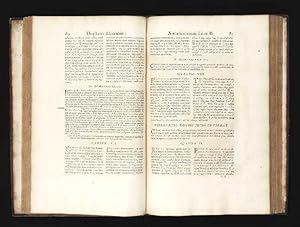
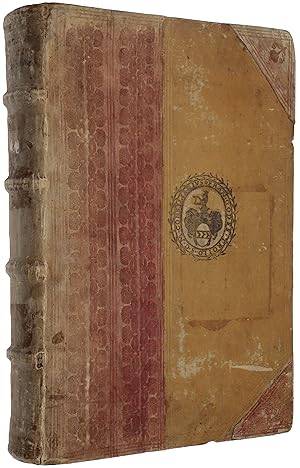
![Bild des Verkäufers für [Homeric Scholia on the Iliad] Homeri interpres pervetustus, in Greek. Edited by Janus Lascaris zum Verkauf von Heritage Book Shop, ABAA](https://pictures.abebooks.com/inventory/md/md12326157724.jpg)
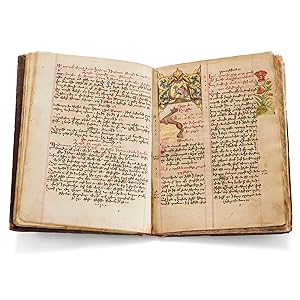
![Bild des Verkäufers für Rerum arithmeticarum libri sex, quoru[m] primi duo adiecta habent scholia, maximi (ut conjectura est) Planudis. Item liber de numeris polygonis seu multiangulis. Opus incomparabile, veræ arithmeticæ logisticæ perfectionem continens, paucis adhuc visum. A Guil[lelmo] Xylandro Augustano incredibili labore Latinè redditum, & commentariis explanatum, inq[ue] lucem editum. Ad illustriss. principe[m] Ludovicum Vuirtembergensem zum Verkauf von SOPHIA RARE BOOKS](https://pictures.abebooks.com/inventory/md/md30259868010.jpg)
![Bild des Verkäufers für Historia romana. [And:] De bellis civilibus zum Verkauf von Heritage Book Shop, ABAA](https://pictures.abebooks.com/inventory/md/md11915893037.jpg)
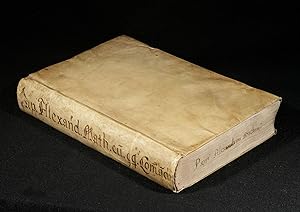
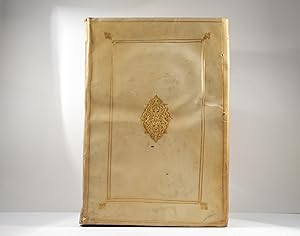
![Bild des Verkäufers für Pappi Alexandrini Mathematicae Collectione. A Federico Commandino Urbinatae In Latinum Conversae, & Commentarijs Illustratae. - [THE CULMINATION OF GREEK MATHEMATICS] zum Verkauf von Lynge & Søn ILAB-ABF](https://pictures.abebooks.com/inventory/md/md778863067.jpg)

![Bild des Verkäufers für Evclide Megarense Philosopho: solo introdvtttore delle Scientie Mathematice" diligentemente Reassettato, et alla integrita ridotto per il degno Professore di tal Scientie Nicolo Tartalea, Brisciano, Secondo le due Tradottioni: e per commune commodo & . - [FIRST "EUCLID" IN THE VERNACULAR BY TARTAGLIA.] zum Verkauf von Lynge & Søn ILAB-ABF](https://pictures.abebooks.com/inventory/md/md992015110.jpg)

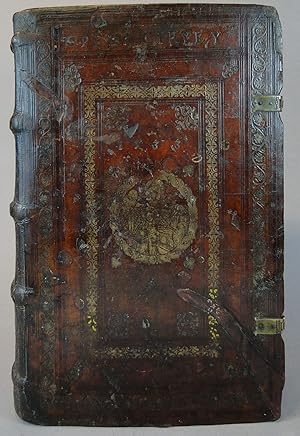
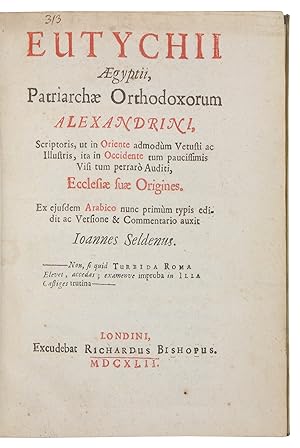
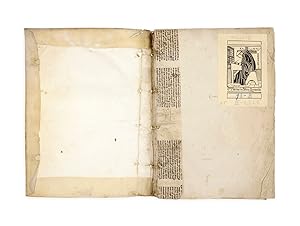
![Bild des Verkäufers für Lexikon [in Greek]/ Dictionarium zum Verkauf von Sanctuary Books, A.B.A.A.](https://pictures.abebooks.com/inventory/md/md9666273691.jpg)
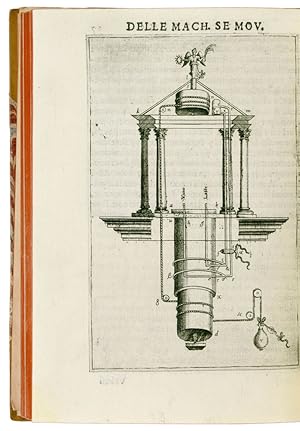

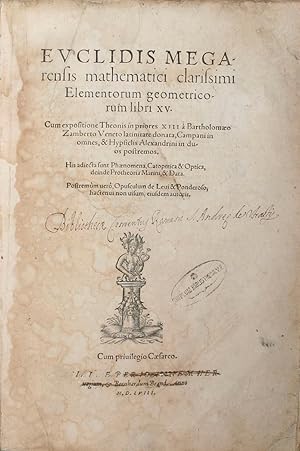
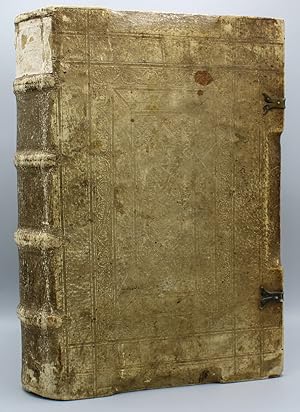
![Bild des Verkäufers für Atlas historique et topographique de la guerre d'Orient 1854,1855 et 1856entrepris par ordre de S. M. l'Empereur Napoléon III rédigé sur les documentsofficiels et les renseignements authentiques recueillis par le corps d'état-Majorgravé et publié par les soins du dépôt de la guerre S. E. le Maréchal Vaillant étantministre de la guerre et le colonel Blondel directeur du dépôt de la guerre. [Crimean War] First edition. zum Verkauf von Wittenborn Art Books](https://pictures.abebooks.com/inventory/md/md30493487317.jpg)
![Bild des Verkäufers für In geormetriam Euclidis Demonstrationum Libri Sex. In quibus Geometria planorum traditur, & brevis Notis perspicue explicatur. Impensis & sumptibus Authoris. - [FIRST SWEDISH EUCLID-EDITION.] zum Verkauf von Lynge & Søn ILAB-ABF](https://pictures.abebooks.com/inventory/md/md992015106.jpg)
![Bild des Verkäufers für Spiritalium liber. A Federico Commandino Urbinate, ex Graeco, nuper in Latinum conversis. Cum Privilegio Gregorij XIII. Pont. Max. - [THE FOUNDATION OF HYDRAULICS] zum Verkauf von Lynge & Søn ILAB-ABF](https://pictures.abebooks.com/inventory/md/md858738662.jpg)
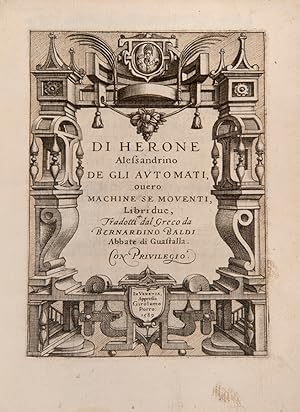
![Bild des Verkäufers für [Title transliterated from Greek: Klementos Alexandreos Ta heuriskomena] Clementis Alexandrini opera gr�ce et latine qvae extant [Clement of Alexandria: Works.] zum Verkauf von Powell's Bookstores Chicago, ABAA](https://pictures.abebooks.com/inventory/md/md22775935509.jpg)
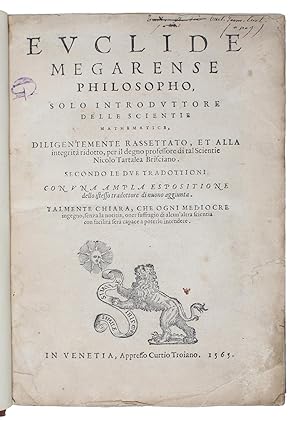
![Bild des Verkäufers für Philonis Iudaei. Lucubrationes quotquot haberi potuerunt (The Fullest Obtainable Collection of Works by Philo the Jew) [AND] Tomus II Philonis Iudaei Commentariorum (Volume Two: The Commentaries of Philo the Jew) zum Verkauf von ERIC CHAIM KLINE, BOOKSELLER (ABAA ILAB)](https://pictures.abebooks.com/inventory/md/md31100199685.jpg)
